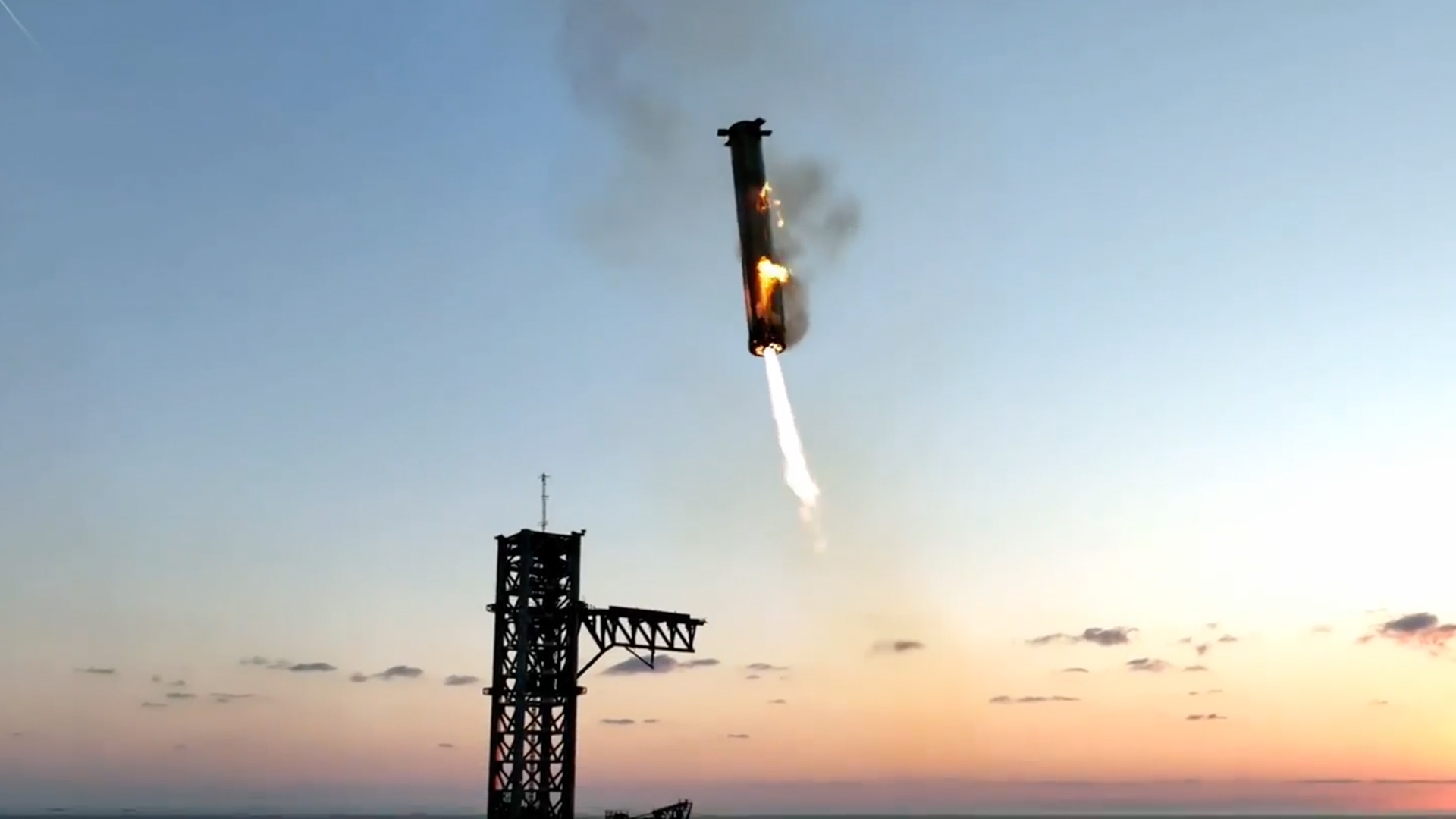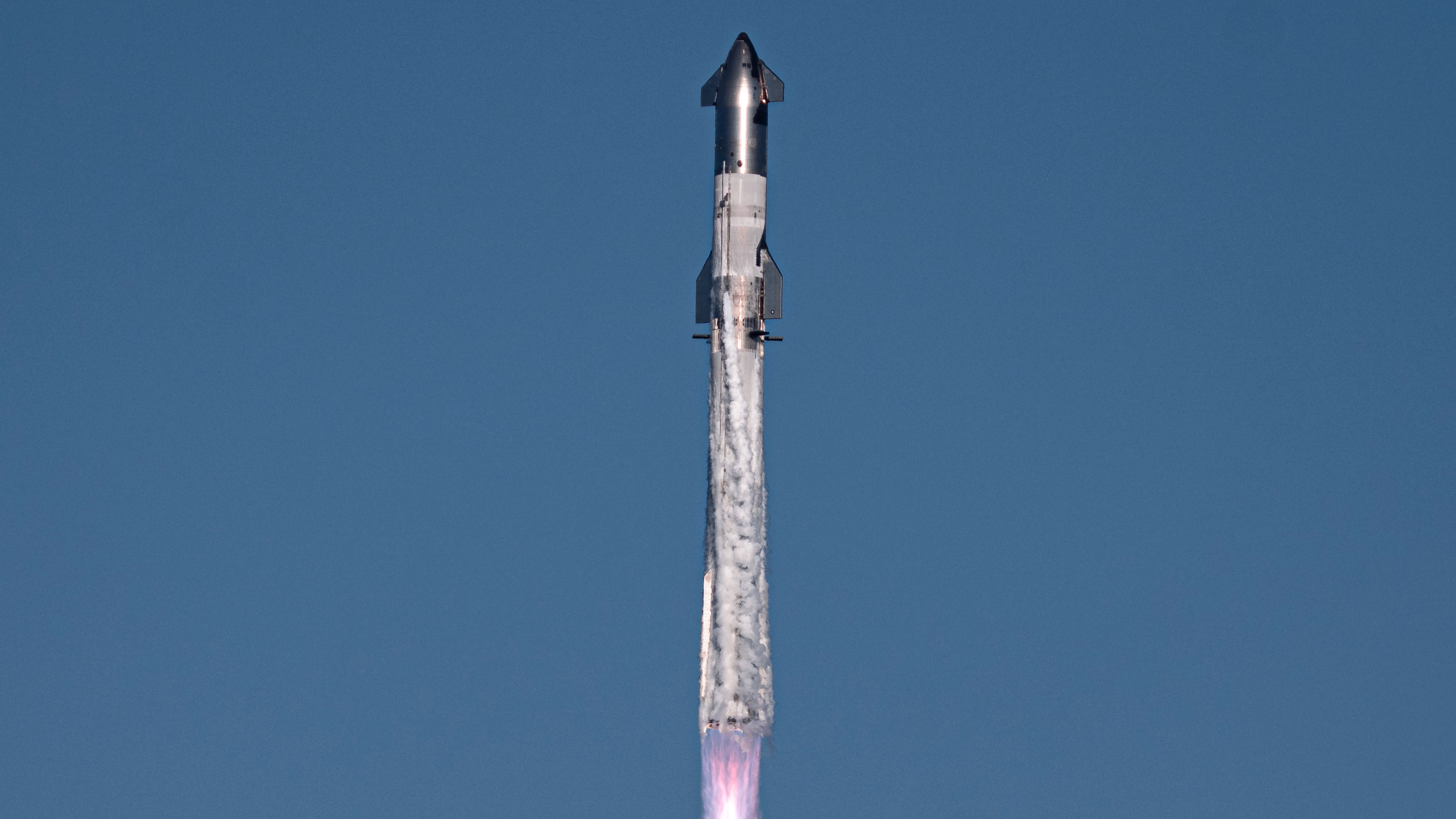
SpaceX had a pretty good 2024.
Elon Musk's company broke its own record for most launches in a single year, continued pushing the boundaries of rocket reuse and made serious strides toward getting Starship, its next-generation megarocket, up and running.
Oh, and Musk has apparently entered the inner circle of President-elect Donald Trump, wielding political power like he never has before. Here's a brief rundown of SpaceX's very busy year.
Shattering launch records and Starship flights
SpaceX launched 98 orbital missions in 2023, a new record for the company at the time — but it left that mark in the dust this year. The company's orbital tally in 2024, as of Dec. 23, is 131 — more than half the global total for the year.
Related: 8 ways that SpaceX has transformed spaceflight
The vast majority of the SpaceX liftoffs this year — 128 of them — were performed by its workhorse Falcon 9, with the powerful Falcon Heavy responsible for the other two.
And Starship launched four times as well, on suborbital test flights that lifted off in March, June, October and November of this year. The vehicle made serious progress on these trial launches. On the most recent three, for instance, both Starship elements — the Super Heavy first-stage booster and Ship upper stage — survived reentry to Earth's atmosphere and made it all the way to the planet's surface.
And on Flight 5, which lifted off on Oct. 13, Super Heavy came back safely to its launch tower, which grabbed the booster with its "chopstick" arms in a move that seemed like a scene from science fiction.

This is the Starship plan over the long haul, by the way: SpaceX wants to catch both Super Heavy and Ship back at the launch tower, a strategy that will make inspection and reflight of the megarocket quicker and more efficient.
The Starship progress this year is important, because SpaceX and NASA have a relatively tight timeline for the rocket: It's the crewed lander for the agency's Artemis 3 moon mission, which is currently scheduled to lift off in mid-2027.
And SpaceX has big plans for the megarocket beyond that effort. The company sees Starship's combination of power and full reusability as the breakthrough that will make the settlement of Mars — a long-held dream of Musk's — economically viable.
Speaking of reuse, SpaceX set a new Falcon 9 record this year: On Dec. 4, the company launched a mission that marked the 24th flight for that particular rocket's first stage. (The Falcon 9 is not fully reusable; its upper stage is expendable.) That won't be the end of it, however; if history is any guide, SpaceX will likely keep pushing that record forward, to 25 flights and beyond.
A big Starlink milestone
Four of this year's Falcon 9 missions sent astronauts to orbit — including Polaris Dawn in September, which went farther from Earth than any crewed flight since the Apollo era and conducted the first-ever private spacewalk.
But most of the 2024 Falcon 9 launches — nearly 70% of them — were devoted to building out Starlink, SpaceX's broadband constellation in low Earth orbit, which currently consists of more than 6,800 satellites.
A small subset of this total — about 350 spacecraft — are capable of beaming service directly to smartphones. But that number is significant, as Musk noted shortly after a key Dec. 4 Starlink launch (not the same one that set the Falcon 9 reflight record).
"The first Starlink satellite direct-to-cell phone constellation is now complete," the billionaire entrepreneur said via X, the social media platform that he owns, on Dec. 5. "This will enable unmodified cellphones to have internet connectivity in remote areas. Bandwidth per beam is only ~10Mb, but future constellations will be much more capable."
Elon Musk and Trump get close
Musk was a big backer of President-elect Donald Trump during this election cycle, ultimately spending about $250 million — and a great deal of time on X — to aid Trump's successful presidential run.
The two are apparently now quite close, and Trump has tapped Musk to co-lead a new advisory committee tasked with helping slash regulations and cut government spending.
This new relationship may not fundamentally change anything. SpaceX was already a powerful and important player in government circles, after all; it's the top U.S. launch provider and routinely lofts key national-security satellites.
But having greater access to the halls of power certainly won't hurt Musk's various companies, SpaceX included; the situation poses conflict-of-interest concerns, as a number of people have pointed out. And it's another part of SpaceX's very eventful, and very accomplished, 2024.







